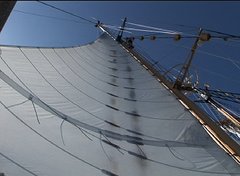From a
distance, Fanning’s landscape matches Palmyra, both isolated circular atolls
surrounding lagoons, low lying strips of green surrounded by infinite blue.
Unlike Palmyra, a protected reserve, Fanning atoll is part of the Kiribati
nation with a population of just a few thousand people. Just as Palmyra offered
an eerie lens into what a world without people could look like, Fanning is an
equally eerie lens into the rapid changes brought with a human presence.
Notably, Palmyra’s protection and
Fanning’s population are both recent phenomena, yet the changes in this short
blip of time are all too apparent. While birds dominate Palmyra’s soundscape, a
more silent island greeted us as we pulled into the waters surrounding Fanning.
A walk around Palmyra guaranteed encounters with countless crabs and dense,
unwieldy forests, while a similar path on Fanning is lined with pigs, cats,
wild dogs, concrete and aluminum structures, and plots of land growing taro.
As we
extensively discussed in our time on the shore, though it is nearly impossible
to appropriately define “sustainability” in its overused buzzword status of
today, it is easy to spot sustainability when you see it. Similarly, it is easy
to discern its lack. Fanning, given its small population and geographic area,
is a tragic example of such a state. Many of Fanning’s staple food items are
imported, brought on ships just a few times each year. The entire nation of
Kiribati depends heavily on foreign aid, and most of this foreign aid comes
only from countries with interests in fishing in Kiribati’s abundant waters,
including Japan, Australia, and New Zealand. At the same time, climate change
and sea level rise are expected to impact Kiribati’s very near future. While it
will take longer for the islands to be entirely consumed by rising sea levels,
classmate Walter discussed the more pressing issue during our on shore conservation
policy discussions: that many of the islands that make up Kiribati could lose
their freshwater lenses due to sea level rise in just two years.
It is
unfathomable to imagine a nation with no freshwater resources, yet this
question has already tangibly entered Kiribati’s political scene. The Kiribati
government has already begun dialogue with New Zealand and Australia on the
potential need to move its entire population away from the original landmass of
the nation to foreign nations.
The
horribly apparent paradox is that this issue is spillover from our
industrialized world. Last night, our first night in Fanning, the lights
illuminating our ship alone heavily outweighed any light coming from the
island, of which I saw only a single bulb close to the church. While our
gas-powered generators ran through the day and night, wind driven vessels
outnumbered those powered by engines in all the lagoon boat traffic I observed
at Fanning.
There are
important lessons in timeliness in this tragedy from which to glean hope. As we
saw at Palmyra, an atoll can transition from heavy human alteration to a proud
consideration as “pristine” in just about 60 years. Nature can and will bounce
back. While it is likely too late for Fanning or even Kiribati as a whole to counteract
its devastating reality, it is invaluable today to effectively learn from these
examples and appropriately proceed into our future.
-Jason D. Kaufman


No comments:
Post a Comment